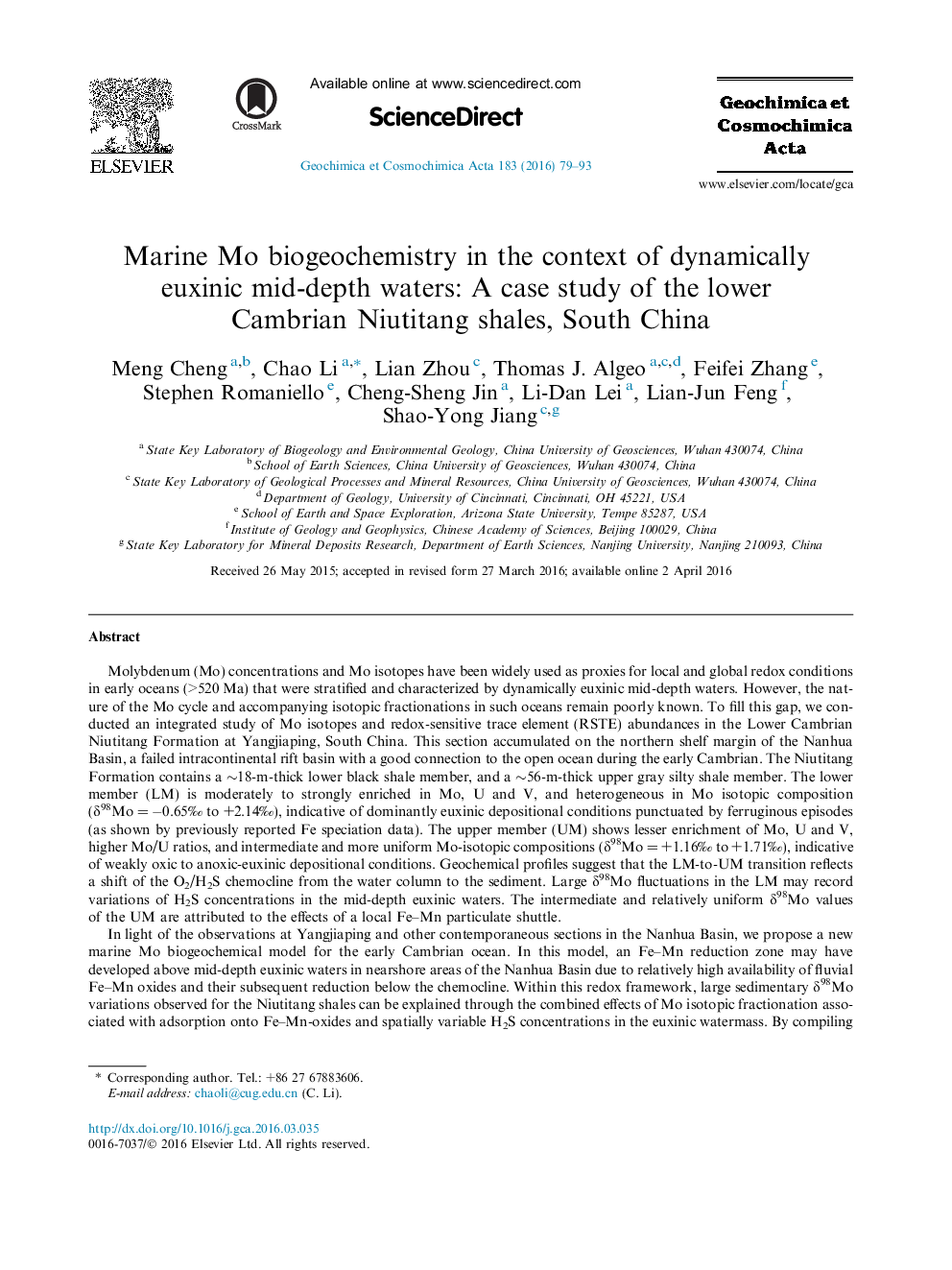| کد مقاله | کد نشریه | سال انتشار | مقاله انگلیسی | نسخه تمام متن |
|---|---|---|---|---|
| 6437212 | 1637974 | 2016 | 15 صفحه PDF | دانلود رایگان |

Molybdenum (Mo) concentrations and Mo isotopes have been widely used as proxies for local and global redox conditions in early oceans (>520 Ma) that were stratified and characterized by dynamically euxinic mid-depth waters. However, the nature of the Mo cycle and accompanying isotopic fractionations in such oceans remain poorly known. To fill this gap, we conducted an integrated study of Mo isotopes and redox-sensitive trace element (RSTE) abundances in the Lower Cambrian Niutitang Formation at Yangjiaping, South China. This section accumulated on the northern shelf margin of the Nanhua Basin, a failed intracontinental rift basin with a good connection to the open ocean during the early Cambrian. The Niutitang Formation contains a â¼18-m-thick lower black shale member, and a â¼56-m-thick upper gray silty shale member. The lower member (LM) is moderately to strongly enriched in Mo, U and V, and heterogeneous in Mo isotopic composition (δ98Mo = â0.65â° to +2.14â°), indicative of dominantly euxinic depositional conditions punctuated by ferruginous episodes (as shown by previously reported Fe speciation data). The upper member (UM) shows lesser enrichment of Mo, U and V, higher Mo/U ratios, and intermediate and more uniform Mo-isotopic compositions (δ98Mo = +1.16â° to +1.71â°), indicative of weakly oxic to anoxic-euxinic depositional conditions. Geochemical profiles suggest that the LM-to-UM transition reflects a shift of the O2/H2S chemocline from the water column to the sediment. Large δ98Mo fluctuations in the LM may record variations of H2S concentrations in the mid-depth euxinic waters. The intermediate and relatively uniform δ98Mo values of the UM are attributed to the effects of a local Fe-Mn particulate shuttle.In light of the observations at Yangjiaping and other contemporaneous sections in the Nanhua Basin, we propose a new marine Mo biogeochemical model for the early Cambrian ocean. In this model, an Fe-Mn reduction zone may have developed above mid-depth euxinic waters in nearshore areas of the Nanhua Basin due to relatively high availability of fluvial Fe-Mn oxides and their subsequent reduction below the chemocline. Within this redox framework, large sedimentary δ98Mo variations observed for the Niutitang shales can be explained through the combined effects of Mo isotopic fractionation associated with adsorption onto Fe-Mn-oxides and spatially variable H2S concentrations in the euxinic watermass. By compiling published data, we found that the large sedimentary δ98Mo variations previously observed in the early Cambrian Nanhua Basin and in other Neoproterozoic-Cambrian marine basins can be similarly explained. Our model provides a novel interpretation of the Mo biogeochemistry of early Earth oceans, within the framework of which Mo isotopes may serve to further our understanding of the oxygenation history of the Earth-surface system.
Journal: Geochimica et Cosmochimica Acta - Volume 183, 15 June 2016, Pages 79-93